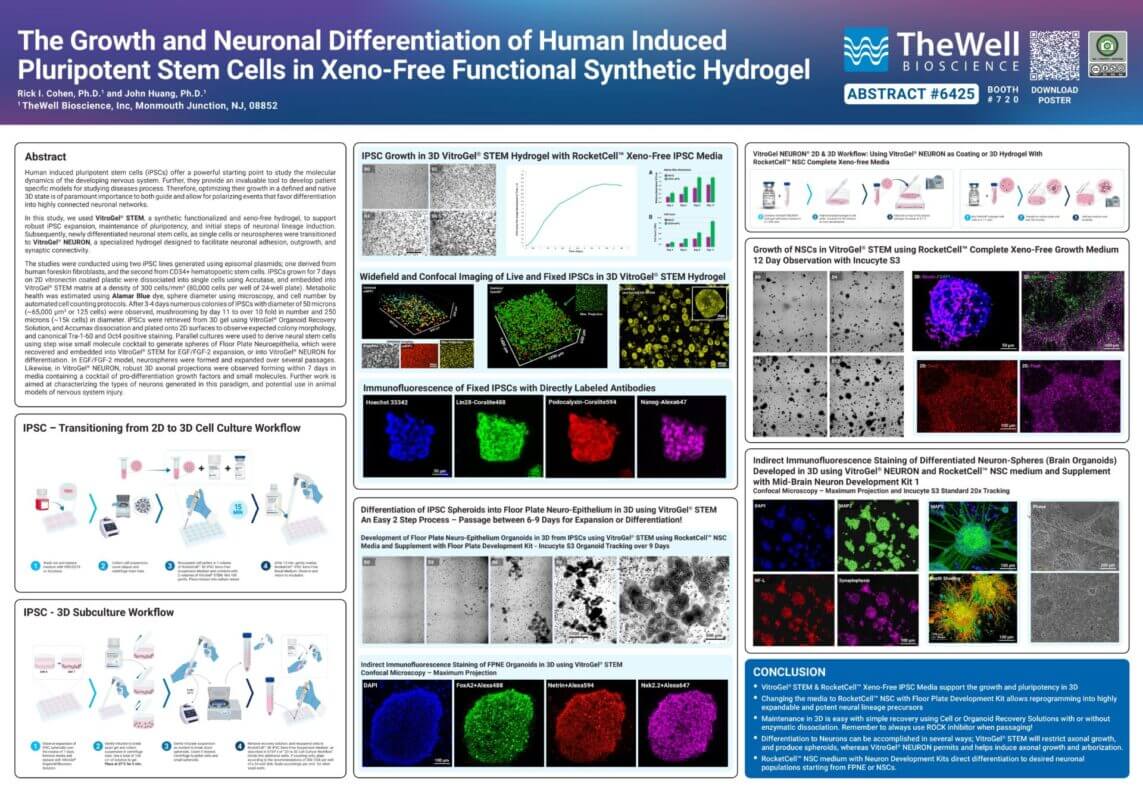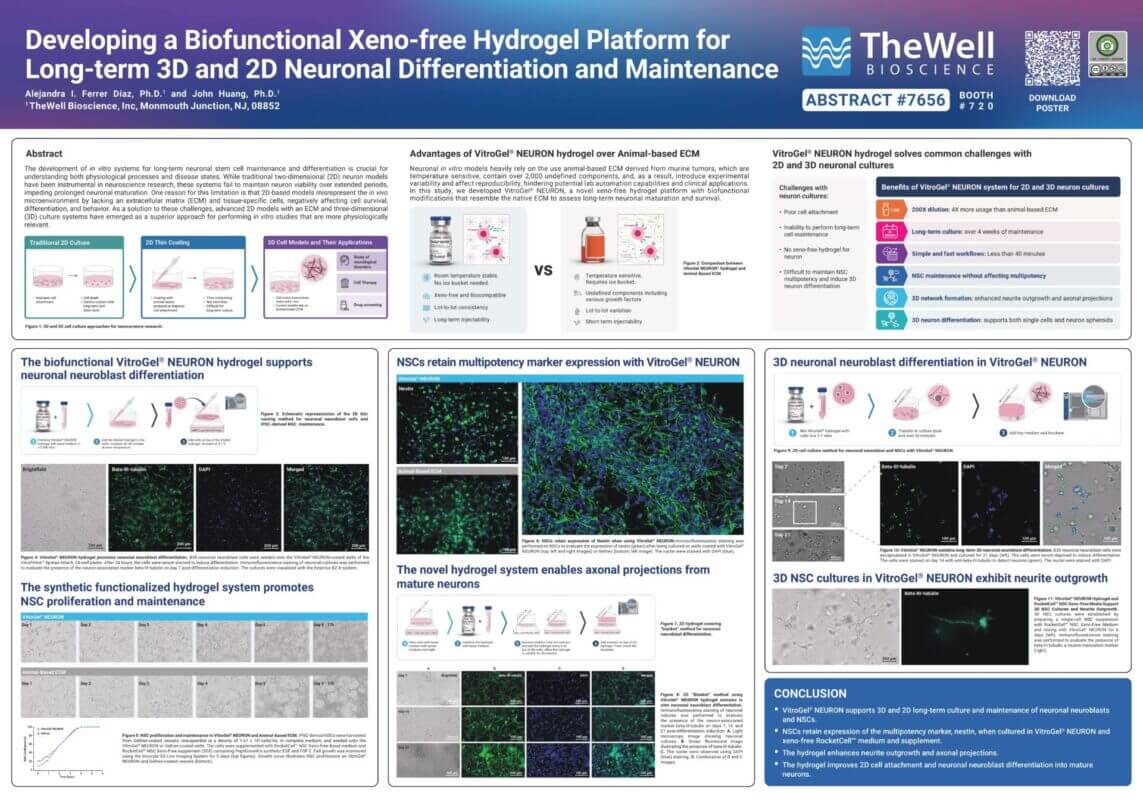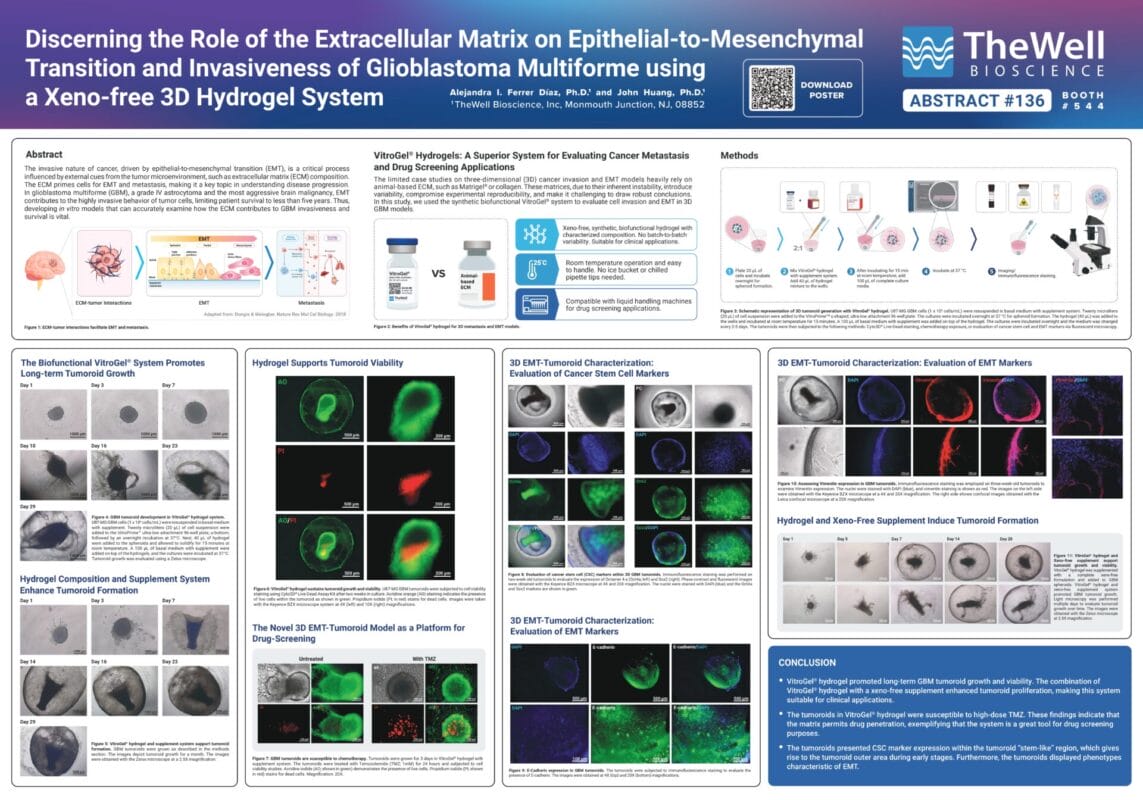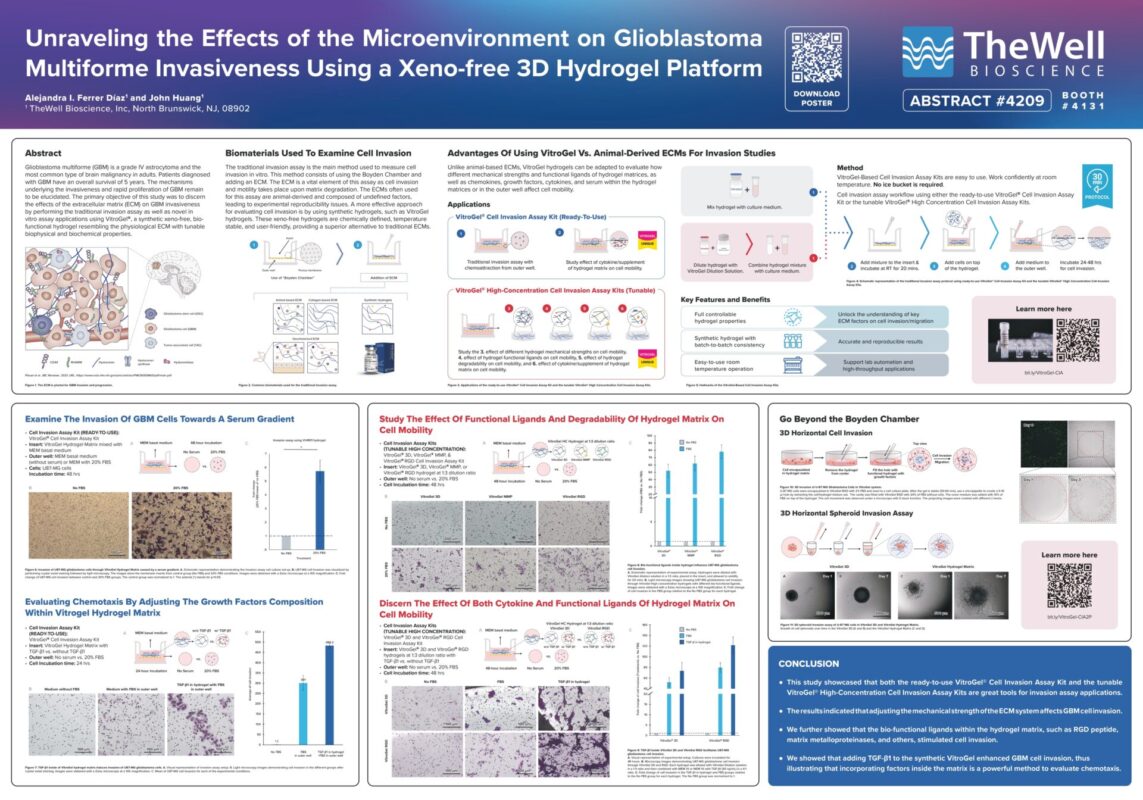Abstract: Human induced pluripotent stem cells (iPSCs) offer a powerful starting point to study the molecular dynamics of the developing nervous system. Further, they provide an invaluable tool for developing patient-specific models to study the disease process. Therefore, optimizing their growth in a defined, native 3D state is of paramount importance to both guide and […]
Category Archives: Poster Presentations
Abstract: The development of in vitro systems for long-term neuronal differentiation and survival is crucial for understanding both physiological processes and various disease states. While traditional two-dimensional (2D) neuron models have been instrumental in neuroscience research, these systems fail to maintain neuron viability over extended periods, impeding prolonged neuronal maturation. One reason for this limitation is that 2D-based models misrepresent […]
Abstract: Tamoxifen, an anti-oestrogen, is the only licensed medication in the UK for breast cancer prevention in high-risk, pre-menopausal women. Data from the Biomarkers of Breast Cancer Prevention (BBCP) trial show that, while tamoxifen reduces overall proliferation after three months of treatment, a subset of women (5/13) show stable or increased proliferation. As proliferation is […]
Abstract: The invasive nature of cancer, driven by epithelial-to-mesenchymal transition (EMT), is a critical process influenced by external cues from the tumor microenvironment, such as extracellular matrix (ECM) composition. The ECM primes cells for EMT and metastasis, making it a key topic in understanding disease progression. For example, in glioblastoma multiforme (GBM), a grade IV […]
Please complete the form below to access the poster abstract titled “Exploring the Impact of the Microenvironment on Glioblastoma Multiforme Invasiveness Utilizing a Xeno-free 3D Hydrogel Platform”.
To receive more information on this poster, please fill the form.
To receive more information on this poster, please fill the form.








